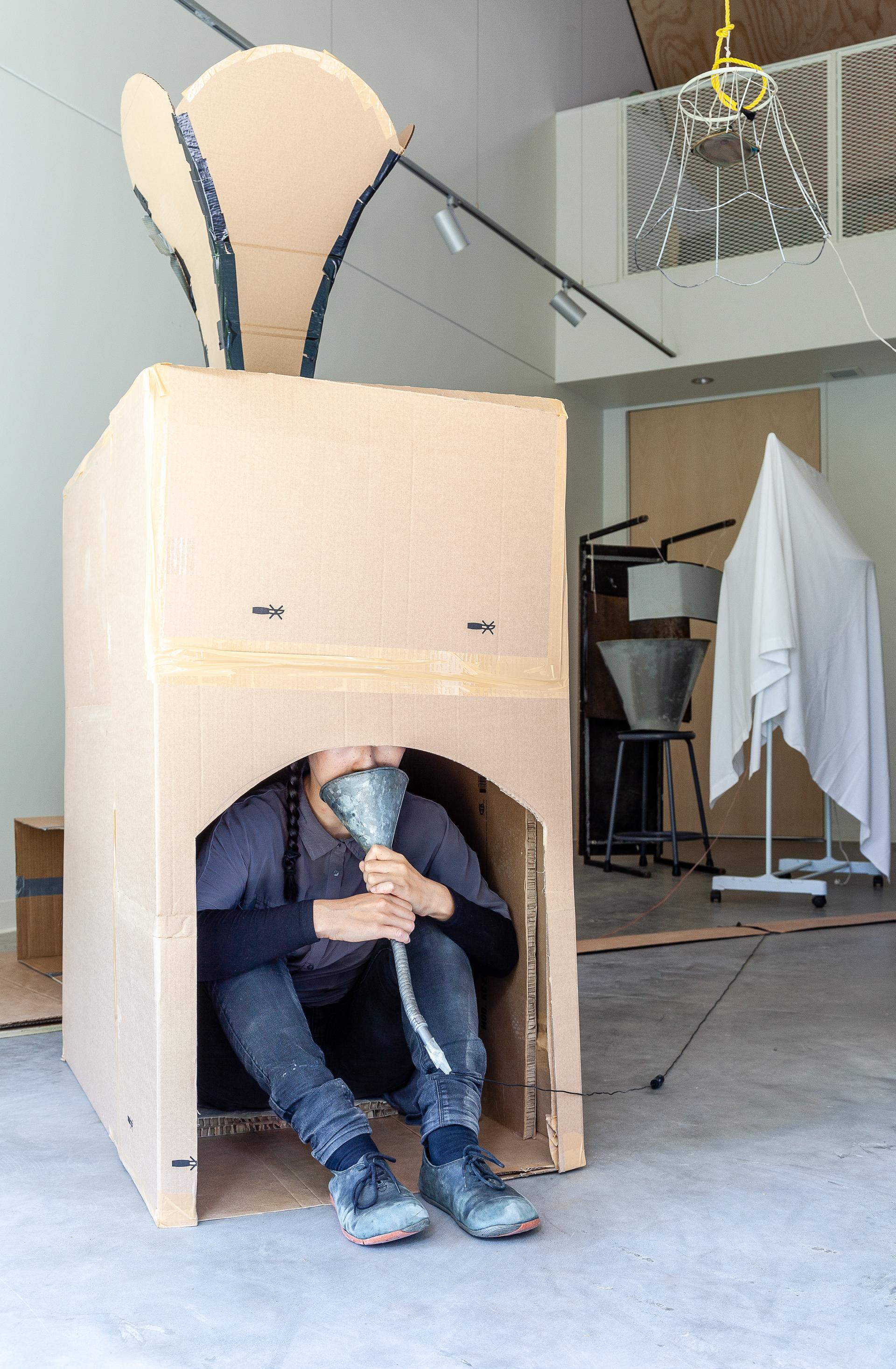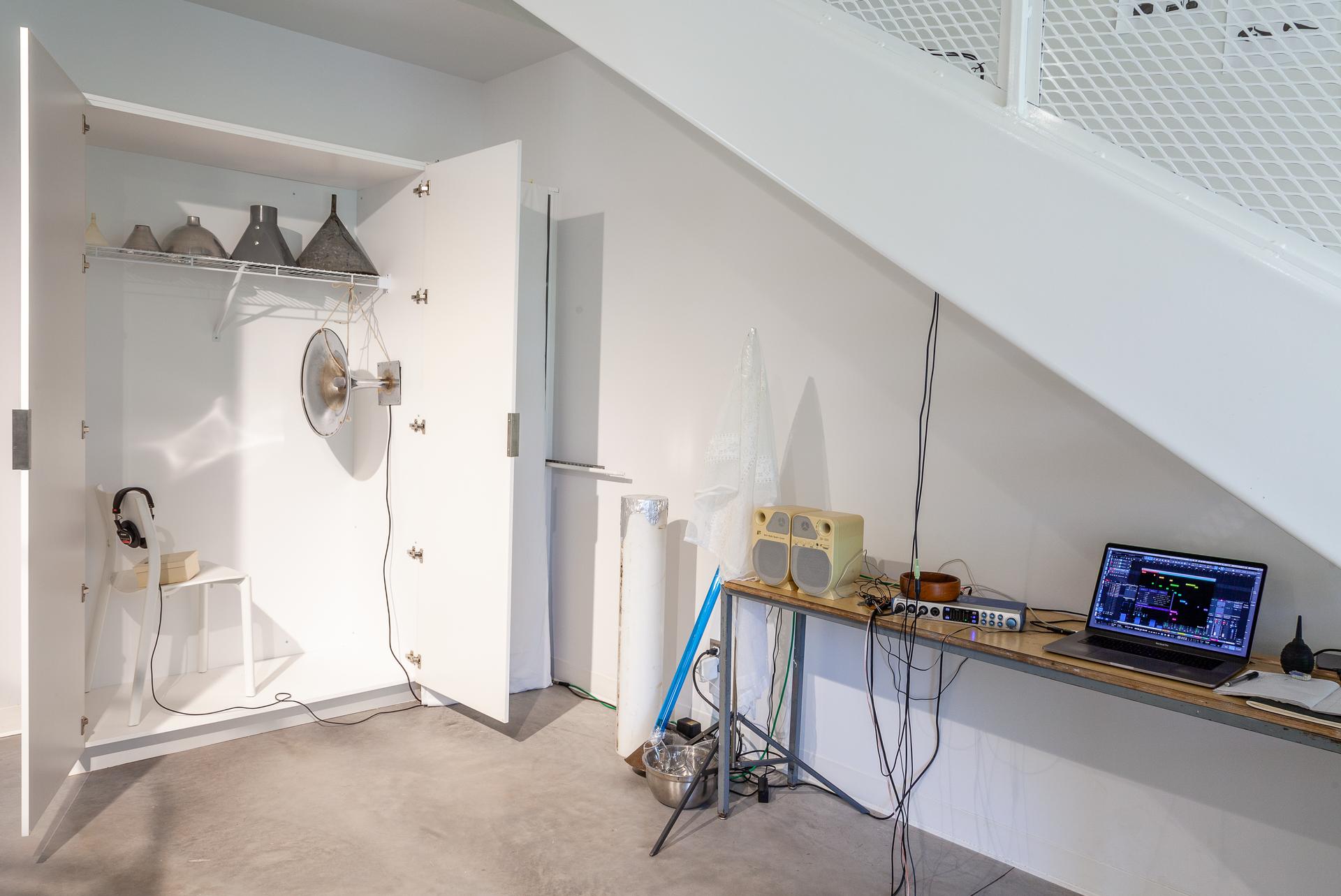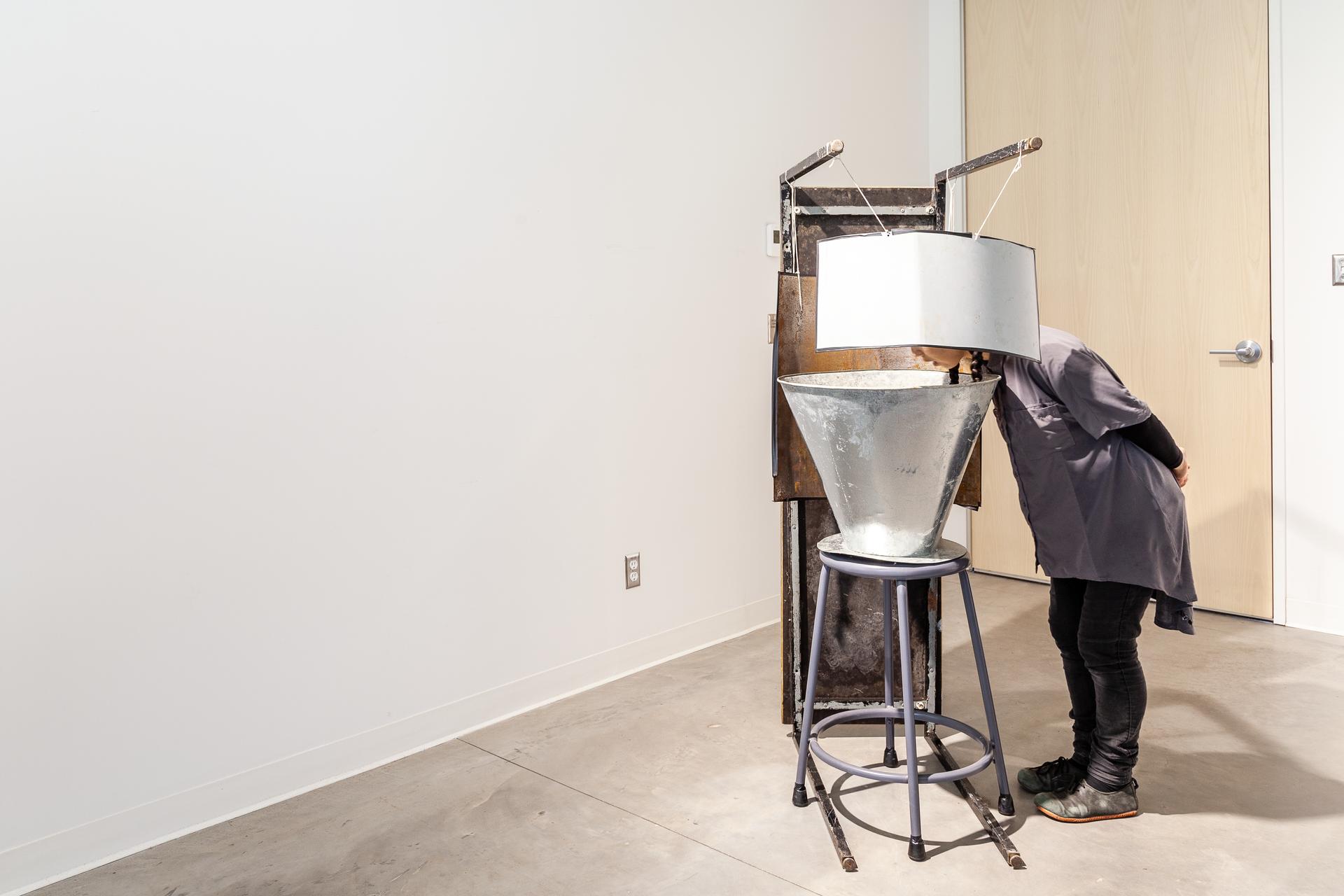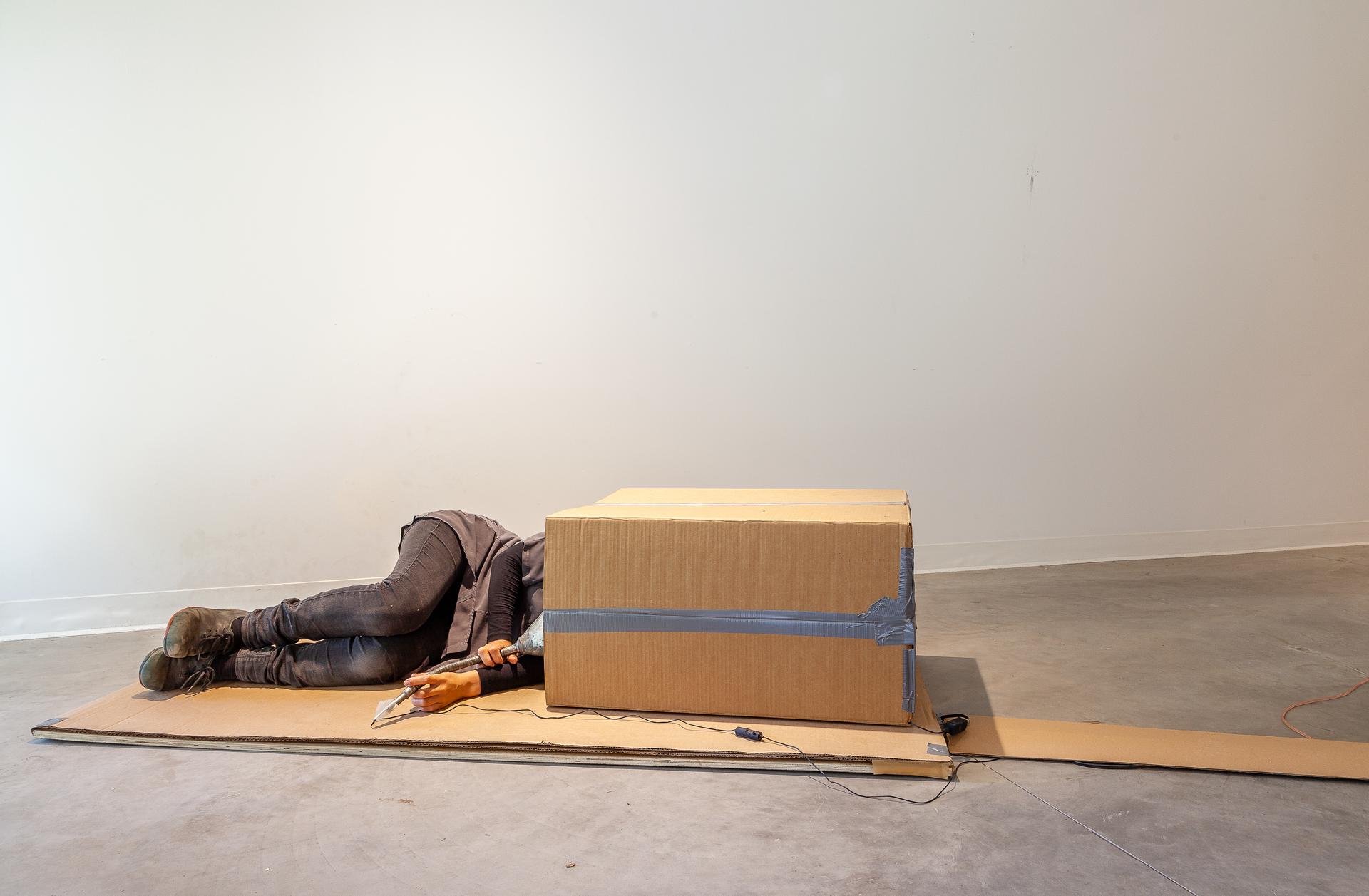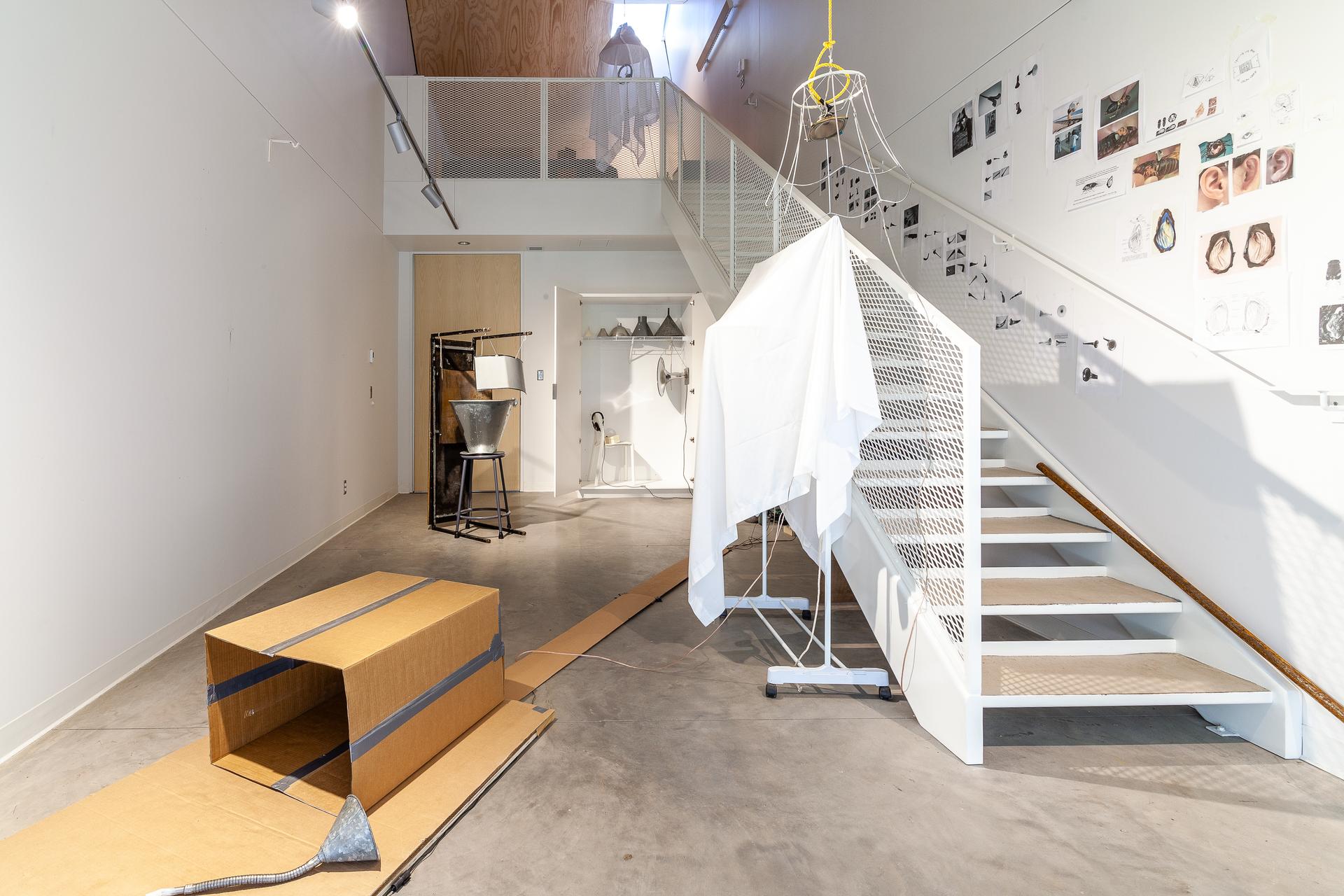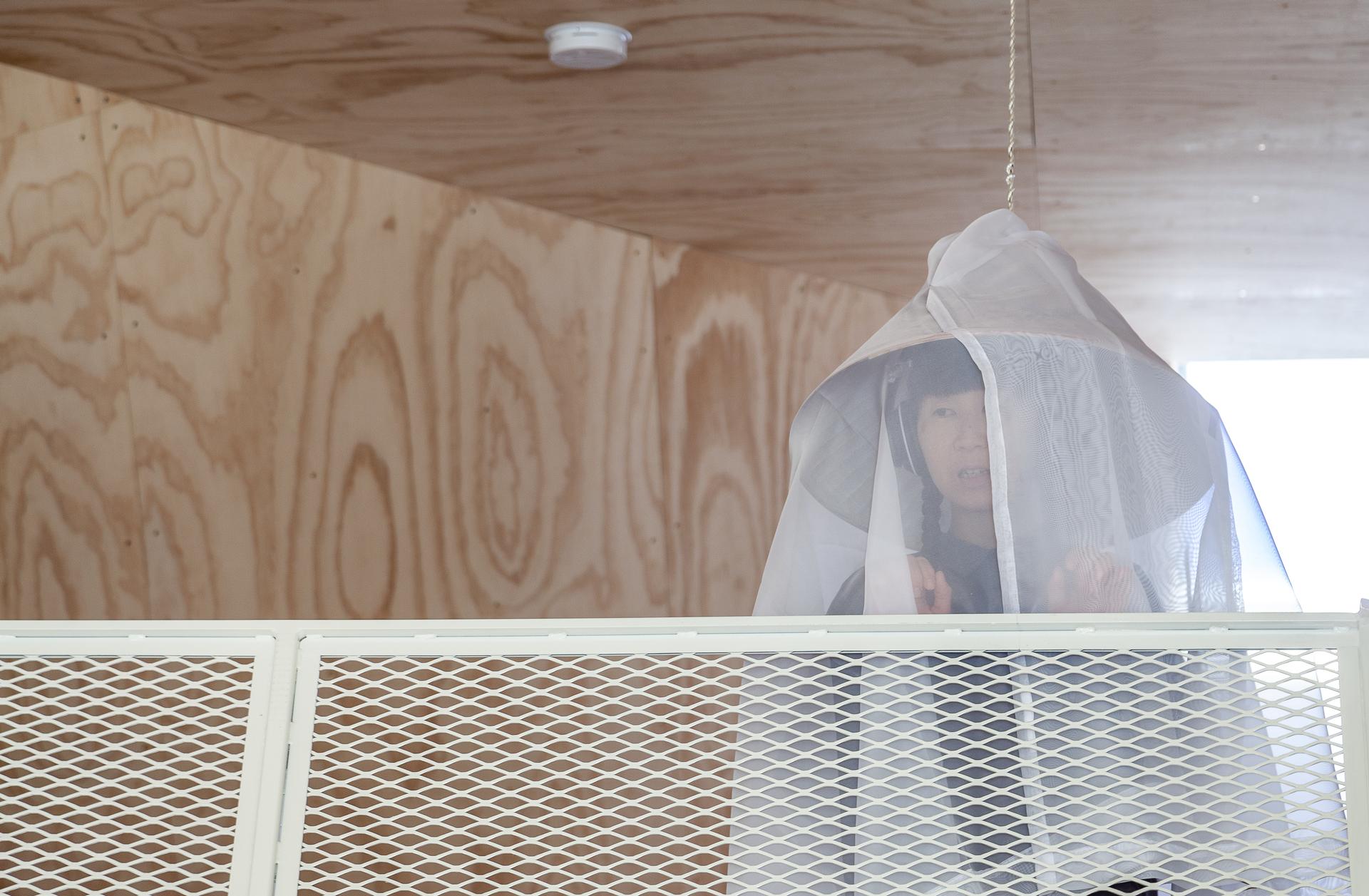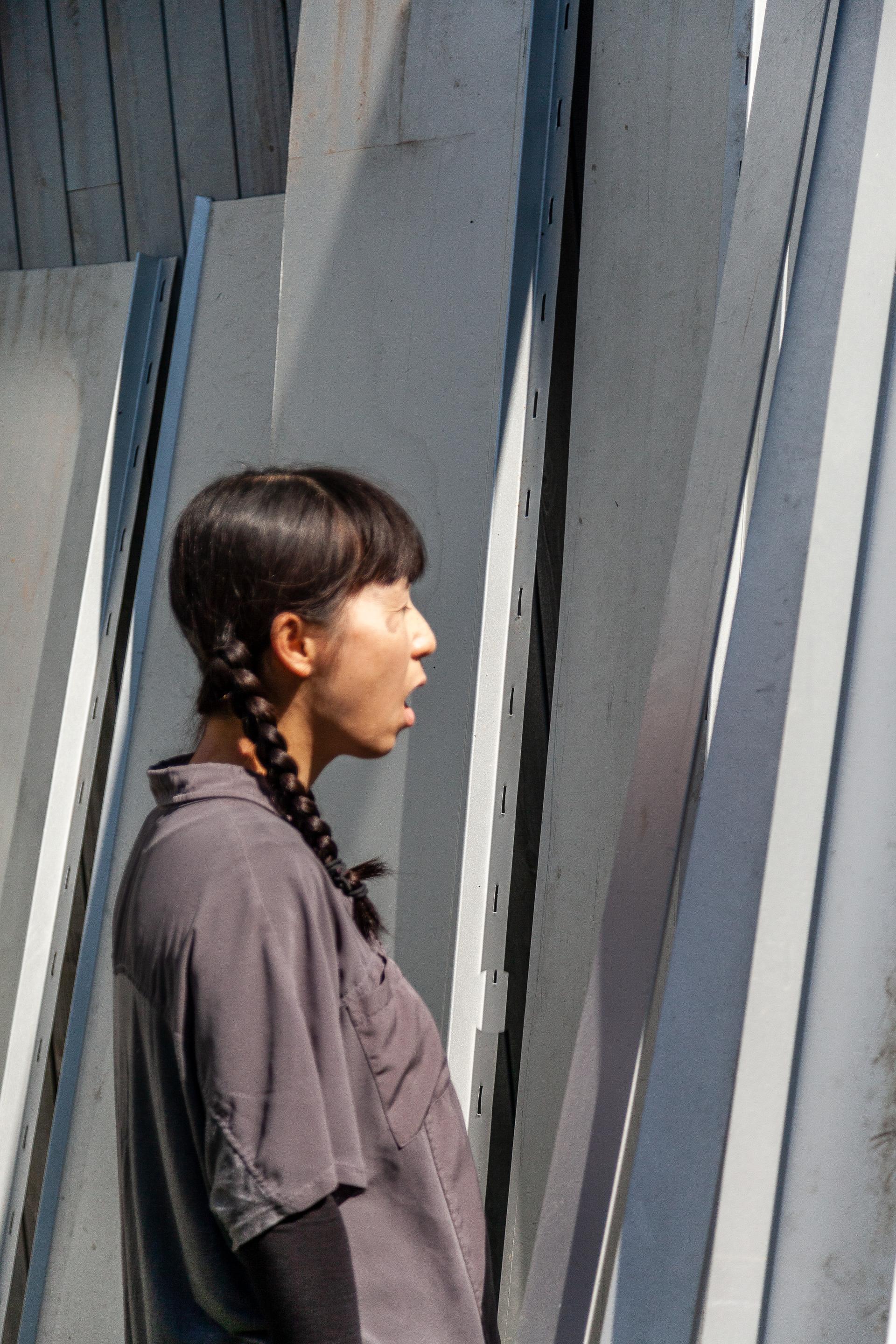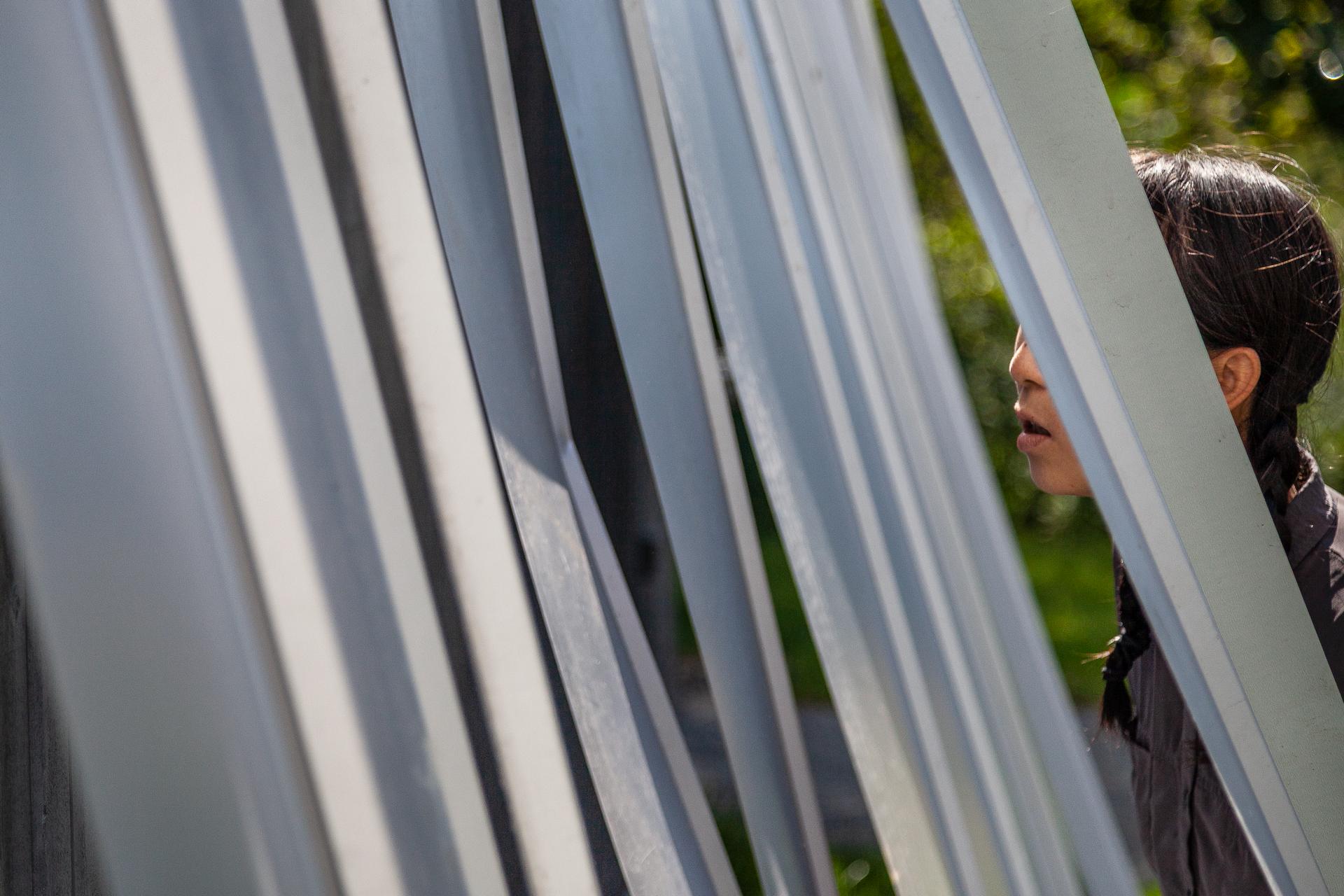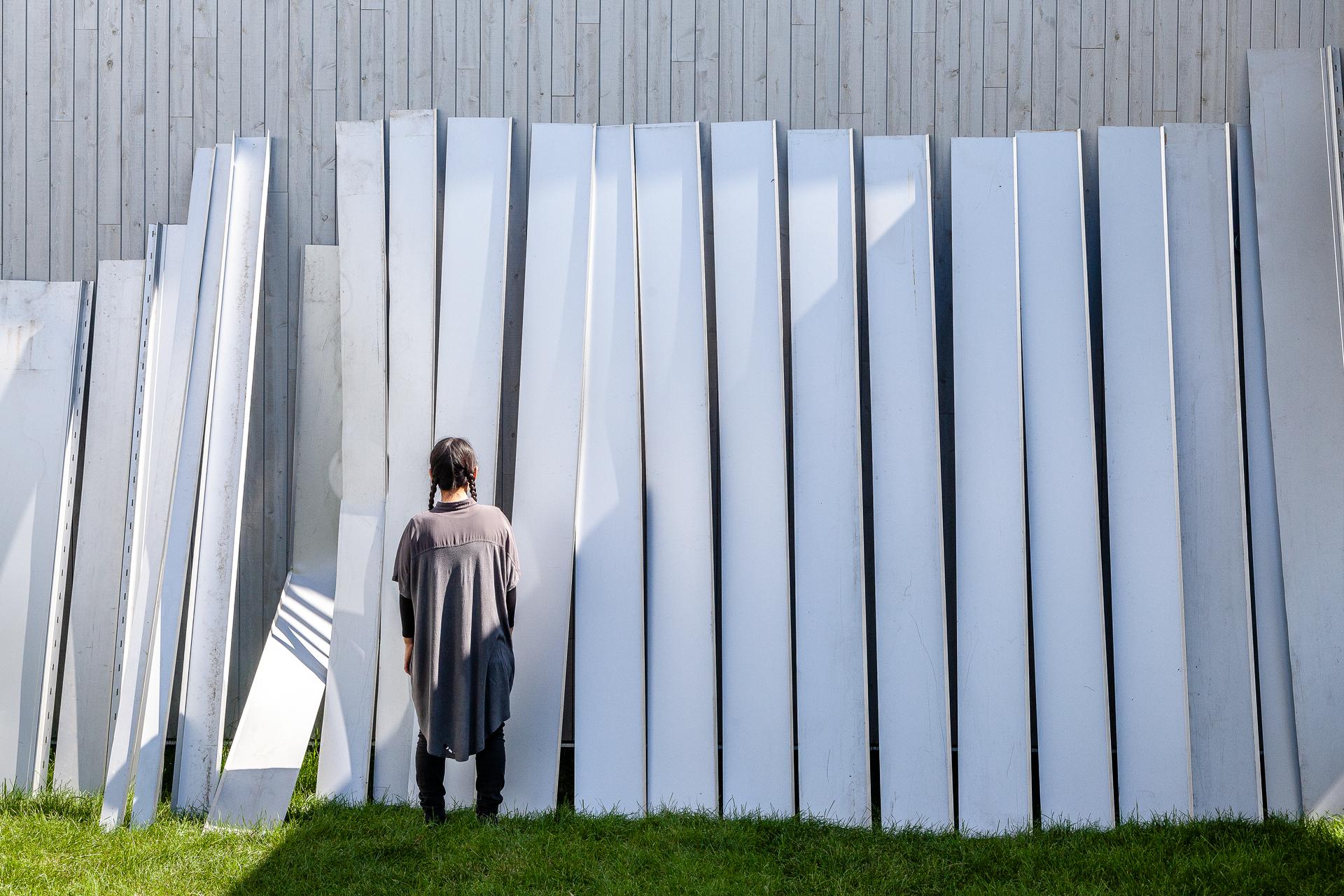
Miyuki Inoue
Testimony
The voice is at the core of Miyuki Inoue’s research. Dealt with in its complexity and nuances, the voice becomes a modulable material with which Miyuki designs sound sculptures. These works, often deployed in the form of installations, testify to her pointed interest in the potential of the voice not just as a vehicle for language but also as a tool for emancipation from social diktats (education of the voice, its formatting for the social context, collective codes and expectations). Through her personal approach and by proposing participatory situations for visitors, she explores the possibilities of deconstructing an imposed, usually unconsciously internalized, form of the voice.
Miyuki therefore creates devices with the goal of opening spaces within which visitors may liberate their voices. To try to break the barriers that we impose on ourselves, she uses pretexts – for example, an invitation to imitate the sound of a cicada: sculptural recording stations are provided with earphones through which visitors can hear the insect’s sound and then try to reproduce it. But because social behaviours are largely codified, she must constantly experiment with new devices to create variable levels of intimacy needed for the exercise she proposes. This approach also makes it possible to observe the diversity of relations that we maintain with our own voice in the public space.
During her residency, Miyuki continued this project in parallel with an exploration of the spaces inside and around Est-Nord-Est. By singing in situ, she drew our attention to these spaces’ reverberation, echo, and vibration effects on the sound of the voice. This performative research, a constant in her work, resonated in a special way as it coincided with the arrival of Est-Nord-Est in its new quarters.
Biography
Miyuki Inoue (Japan 1984, lives in Amsterdam) is a visual artist, whose focus is on her voice or collective voice, finding a place for unusual liberating approaches to vocal work. She makes drawings, plastic sculpture, performative installation and participatory performance.
She studied art practices at the University of Tsukuba and at the Royal Institute of Art (Sweden). After working for local art projects and exploring voice/sound related expressions in Japan, she enrolled in Master of Voice at the Sandberg Institute, where her research focused on hearing aids on one hand; and historical and contemporary forms of analogue amplification and modification of the voice on the other.
Discover
Newsletter
Keep up to date with the latest news!
